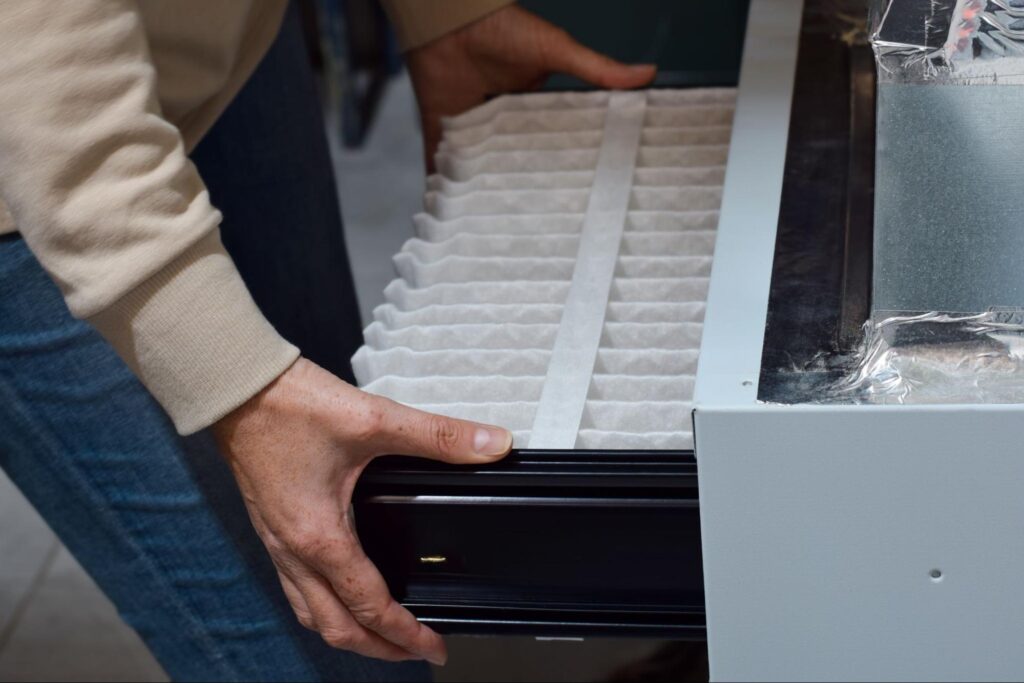Congratulations on reaching the incredible milestone of owning your new home! Whether you chose a custom or semi-custom home through a new construction project, this exciting chapter comes with important responsibilities. In your first year, establishing good habits is key to protecting your investment, maintaining your property’s value, and ensuring a secure, efficient living space for you and your family.
This guide is designed to help you navigate your first 12 months with practical advice and actionable checklists. We’ve created a month-by-month roadmap offering clear steps—from initial safety checks and document organization to seasonal upkeep and energy efficiency improvements—to empower you in homeownership. By focusing on essential tasks, safety measures, and regular maintenance, you’ll ensure your new home stays in top shape.
How to Use This Guide
Think of this as your friendly first-year roadmap. Each month, you’ll find the most important tasks, ways to spot issues early, and tips for when to call a pro. Set up a homeowner binder (see Month 2), add reminders to your calendar, and track your progress—small steps now can save you headaches later. Start with Month 1 as soon as you move in, and go month by month. For tasks tied to weather—spring yard work, winterization, etc.—feel free to do those when the season fits your climate, not just the number of months since closing. If you moved in during summer or fall, glance ahead for any urgent seasonal items.
Quick Access: Essential Contacts
- Emergencies: 911
- Poison Control: 800-222-1222
- Call Before You Dig: 811
- Utilities: Check your bill for providers
- Home Warranty: Use direct contact from closing packet
- Trusted Pros: Save numbers for a 24/7 plumber, HVAC contractor, electrician, roofer, pest control
- HOA: Portal link & manager contact
- Insurance Agent: Name, phone, policy number
Month 1: Settling In & Essential Safety
Begin by making sure all utilities (water, electricity, gas, internet) are active. Change or rekey your locks as needed and update any security codes or alarm settings for peace of mind. Locate and test emergency shut-offs for water, gas, and your electrical breaker box. Update your address with banks, the DMV, and insurance companies—plus, introduce yourself to your neighbors for a welcoming community connection.
Don’t overlook basic home protection: inspect your home for any immediate repairs, replace filters in your HVAC and water systems, and check smoke detectors as well as carbon monoxide detectors. Early action builds a solid foundation of safety and comfort.
When repairs pop up, use a simple triage:
- Critical (immediate): Active leaks, gas smells, sparking outlets, no heat in freezing weather—shut off utilities and call a pro.
- Urgent (this week): Slow drips, stuck windows/doors, inoperable GFCIs.
- Routine (30 days): Cosmetic fixes, squeaks, caulk touch-ups.
Always call a licensed professional for gas, electrical, or active plumbing issues.
Month 2: Comfort, Cleanliness, and Organization

Now that you’ve settled in, turn attention to cleanliness and organization. Even if your home feels fresh, perform a deep clean of key living areas, the attic, basement, and garage to catch signs of pests or moisture. Create your homeowner binder to organize:
- Warranties and proof of registration (snap model/serial numbers)
- Insurance declarations and agent info
- Deed/closing documents, survey
- Builder orientation materials (paint codes, finishes, flooring SKUs)
- Utility accounts, HOA credentials, and a shut-off location map
Set up your first-year maintenance calendar. Keep it simple:
- Monthly: HVAC filter, GFCI test, leak scan
- Quarterly: Gutters, smoke/CO test, dishwasher filter, exterior pest perimeter
- Biannual: Deep clean carpets/drapes, water heater service, caulk touch-ups
- Annual: HVAC tune-up, roof/foundation inspection, dryer vent cleaning
Finally, create a straightforward emergency plan with escape routes and a list of critical contacts. These steps help you stay organized and prepared.
Month 3: Appliance and System Maintenance
Month 3 focuses on keeping your home’s essential systems running smoothly. Complete any warranty registration for major appliances. Clean key appliances by vacuuming refrigerator coils, clearing debris from dryer vents, and rinsing dishwasher filters—routine care will extend appliance life. If your home uses a sump pump, test it for proper function and schedule your HVAC system for a spring checkup. Keep an eye out for leaks or low water pressure, too. Regular inspection and simple upkeep go a long way toward avoiding costly repairs later.
Month 4: Spring Yard and Exterior Maintenance
As winter recedes, spring is the time to freshen your home’s exterior and yard. If Month 4 doesn’t match this season for you, skip ahead to this section when the weather changes, then return to your regular monthly flow.
Clean gutters and downspouts, clearing out debris to prevent water damage. Check the roof, siding, and windows for any winter-related wear and tear. By identifying issues early, you’ll safeguard your property from more serious problems down the road.
Look over outdoor faucets, sprinklers, and irrigation systems for leaks or malfunctions. Tidy up your landscaping by trimming shrubs, mulching, or planting flowers to enhance curb appeal. A gentle power wash can revive exterior surfaces so your home looks its best for the warmer months.
Month 5: Boosting Energy Efficiency
Month 5 is ideal for tackling energy efficiency measures that reduce utility costs. Lower your bills and increase comfort: install a programmable thermostat to better control heating and cooling schedules based on your routine. Inspect windows and doors for drafts and repair them promptly by sealing gaps or updating poorly insulated areas. Begin tracking your utility baseline—record the last three months’ usage and cost so you can spot improvements after upgrades.
Upgrade lighting to energy-efficient LED bulbs, consider additional air sealing steps in the attic or around pipes, and aim for R-38 to R-49 insulation. If you have ductwork in unconditioned areas, seal and insulate those runs. Such improvements not only cut down on energy bills but also contribute to a more sustainable home environment.
Month 6: Midyear Check-In and Comprehensive Cleaning
At six months into homeownership, it’s wise to reevaluate your home’s overall condition. Review your homeowners insurance—finished basements, new decks, or expensive purchases often mean your coverage needs an update (and security systems might mean a discount). Test GFCI outlets to confirm they’re functioning. If your home includes a fireplace or chimney, consider an inspection to maintain safety and efficiency.
Dedicate extra time to deep-clean carpets, upholstery, and curtains. Keep indoor humidity between 30–50%. Run bath fans after showers and use your kitchen hood while cooking. Inspect less-frequented spaces like the attic, basement, or crawlspace for any signs of pests, mold, or leaks. This thorough midpoint review helps you catch minor problems before they become major repairs.
Month 7: Enhancing Security and Smart Home Upgrades
In Month 7, consider reinforcing home security and exploring smart home features. Review your alarm system and look into upgrading with smart cameras. Video doorbells, motion sensors, and controlled lighting can further deter intruders. If you use digital access codes, update them regularly for added protection. Smart upgrades can also benefit you if you’re ever interested in selling or if you plan to expand your home down the line.
Meanwhile, declutter storage areas such as the garage or shed. Keeping these spaces organized helps maintain a safer, more efficient household. Prevent pests by treating your home’s exterior quarterly, sealing penetrations, and keeping mulch away from the foundation. Call pros for termites, rodents, or persistent infestations.
Month 8: Outdoor and Seasonal Preparation
As cooler weather approaches, Month 8 is about preserving your home’s exterior and outdoor living spaces. If it’s not approaching fall yet in your area, be sure to come back to these steps when temperatures begin to drop, then return to your monthly routine as outlined.
Inspect decks, patios, and fences for stability. Repair or reseal these structures to protect them from rain or snow. Clean and store summer gear and gardening tools properly for the next season.
Look over your home’s exterior paint or caulk for signs of aging or cracks, updating where needed to keep moisture out. If you maintain a garden, start light fall cleanup for a smooth seasonal transition. These tasks help retain your home’s exterior appeal and preparedness all year long.
Month 9: Fall Maintenance

When fall arrives, shift attention indoors to prepare for dropping temperatures. If it’s not fall according to your move-in timetable, just mark this section for review when the season arrives, then continue with the next month’s guide.
Clean gutters and downspouts again, clearing them of leaves to avoid clogging. Flush your water heater to remove sediment buildup, checking for any performance issues.
If you have a fireplace or wood stove, schedule an inspection and cleaning for safe, efficient heating. Check windows and doors for drafts and apply sealing or weather stripping where needed. Finally, arrange a heating system tune-up so you’ll be ready for colder weather without surprises.
Month 10: Preparing for Holidays and Winter Storms
Month 10 is a busy period—holiday preparations blend with winter storm readiness. If your move-in timetable means the holidays or winter weather don’t line up with Month 10, circle back to these checklists when the season fits, before resuming the usual monthly flow.
Inspect your holiday lights and replace any damaged bulbs or wiring before hanging them. Freshen up guest spaces if you’re expecting visitors, ensuring bedding, towels, and other essentials are on hand.
Review your emergency supplies by learning how to build an emergency kit, and check that shovels, ice melt, or a snowblower are accessible. Service snowblowers, prep shovels and ice melt, and make a snow/ice removal plan—even if your HOA handles common areas. Taking these precautions allows you to relax and enjoy the festive season with minimal stress.
Month 11: Winterization
Month 11 is crucial for winterproofing. If it’s not yet winter in your area, be sure to come back to these steps when temperatures begin to drop, then return to your monthly routine as outlined.
Drain and shut off outdoor faucets and protect or insulate any exposed plumbing. Make sure your attic insulation is in good shape to prevent heat loss. Inspect the seals around doors and windows, replacing any cracked caulk or weather stripping.
Clear gutters and downspouts to forestall ice dams, have a pro blow out your irrigation system, and prepare a backup plan for power outages—such as a portable generator. These steps help keep your home warm and secure when winter weather is at its worst.
Month 12: Year-End Review and Planning Ahead
Reaching the 12th month of homeownership is a major milestone. Perform a thorough deep clean, focusing on high-traffic areas and cluttered spaces. Reorganize closets and storage solutions that may have become disordered over the year.
Schedule necessary inspections for your roof, HVAC, and foundation to catch issues before they escalate. Inventory appliances, noting age, condition, and warranty status; compare to average lifespans. Set a maintenance budget (1–2% of home value is a smart target) and prioritize next year’s projects: safety, efficiency, exterior protection, then lifestyle upgrades. Reflect on which maintenance tasks you found manageable and which ones you might adjust going forward. By doing so, you’ll set yourself up for continued success in caring for your investment.
Celebrating Your First Year of Homeownership and Paving the Way Forward
You’ve built steady habits that protect your home’s value and make everyday living easier. Keep your binder and calendar current, revisit these monthly sections as the seasons change, and remember—you can start anywhere in the year. Small, consistent effort will keep paying off in comfort, savings, and confidence.
If you’re starting to think about what’s next—more room to grow, a different layout, or a new neighborhood—Reinbrecht Homes is here as a resource. Browse customizable floor plans, talk with our team about timelines and budgets, or explore communities across Southern Indiana, Eastern Illinois, and Northern Kentucky at your own pace. When you’re ready, start a conversation and see how your next home can fit the life you’re building.
Here’s to many more years of easy upkeep, smart upgrades, and a home that works beautifully for you and your family.

